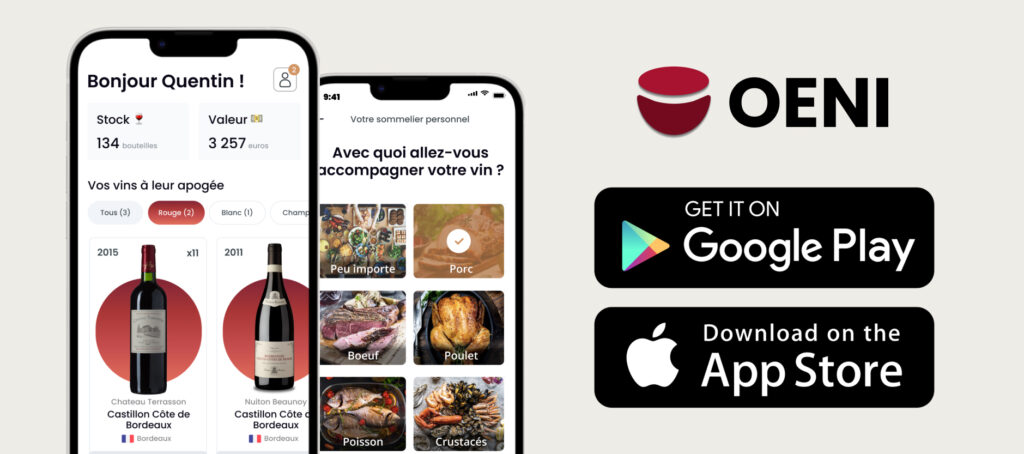Understanding the different indications on a wine label helps you choose the right bottle. Classifications such as AOC, IGP or Vin de France influence the style, origin and price of a wine. Here's a clear guide to understanding these distinctions.
Wine classification: a hierarchy of quality and origin

In France, wine classification is based on a system governed by European legislation. There are three main levels. Each corresponds to a degree of link between the product, the terroir and the rules of production. These categories guarantee the origin and quality of the wine.
The system promotes transparency for the consumer. It also promotes regional know-how. Knowing about these labels helps you make an informed choice, according to your expectations and budget.
AOC: the pinnacle of wine classification
Appellation d'Origine Contrôlée (AOC) represents the strictest level. It guarantees that the wine comes from a precise geographical area and respects strict rules. This applies to grape varieties, plot size, winemaking methods and yields.
Each AOC reflects the identity of a terroir. A Bordeaux or Chablis wine can only exist if it complies with its specifications. This label requires a strong link between the soil, the climate and the winemaker's work.
Famous AOCs include Pauillac, Hermitage, Châteauneuf-du-Pape and Sancerre. These names often reassure wine lovers looking for character and authenticity.
IGP wine: a good compromise between freedom and origin
TheProtected Geographical Indication (PGI wine) offers greater flexibility. The wine must come from a defined geographical area, but the rules are more flexible. The winemaker can choose more grape varieties and adapt his methods to his preferences.
Wine PGI allows you to combine creativity and traceability. It's an excellent choice for those who want to explore different wines while retaining their regional roots. Examples include IGP Méditerranée, Pays d'Oc and Val de Loire.
These wines often represent good value for money. They are ideal for curious wine-lovers keen to discover a variety of aromatic profiles.
Vin de France: freedom above all else
Vin de France is the freest category. The winemaker can blend grapes from all over France, with no restrictions on precise origin. He can also use grape varieties not authorized in the AOC or IGP categories.
This level offers immense creative flexibility. You'll find innovative cuvées, natural wines and atypical blends. The absence of constraints can result in surprising products.
However, Vin de France does not mention a region on the label. Only grape varieties, vintages and the name of the producer appear. For lovers of freedom and discovery, these wines deserve your full attention.
What are the criteria for differentiating between AOC, IGP and Vin de France?
Wine classification is based on three main criteria:
- Geographical area of origin
- Authorized grape varieties
- Growing and winemaking practices
TheAOC imposes a strong regional identity, while theIGP wine combines origin and freedom. Vin de France, on the other hand, favors inventiveness and diversity.
Depending on your objective - whether it's to discover a terroir, explore a grape variety or test an original style - these labels will guide you.
Which label is best for you?
Lovers of tradition and authenticity will turn to an AOC. This label is ideal for refined meals, solemn occasions or gifts.
IGP vin will appeal to those looking for a wine that's accessible, gourmet and well-made. It's a good choice for simple meals or aperitifs with friends.
Vin de France is for the explorer. Those who like to get off the beaten track, try out new aromatic profiles and support innovative craftsmanship.
A constantly changing world of wine
For several years now, a number of well-known winegrowers have voluntarily chosen to produce under the Vin de France label. They reject the constraints of appellations in favor of creativity. Some of the great names in natural wine are adopting this approach.
Similarly, some wine PGIs are gaining in quality and reputation. They are becoming benchmarks, sometimes to the detriment of some less rigorous AOCs.
Wine classification evolves over time. It adapts to market expectations, viticultural innovations and the realities of the climate.
The consumer at the heart of the system
Today's consumers are more informed. They no longer rely solely on a label. They want to understand what they're drinking, where the grapes come from and how the wine was produced.
The distinction between AOC, IGP vin and Vin de France makes it easy to decipher this information. This simple reference becomes a key to the complex world of wine.
Choosing a wine is no longer just a question of price or brand. It also reflects a philosophy, a consumption pattern and sometimes a commitment.
If you enjoyed this article, please read the following article "California wines: a wealth of terroirs and flavors", which might also interest you!





